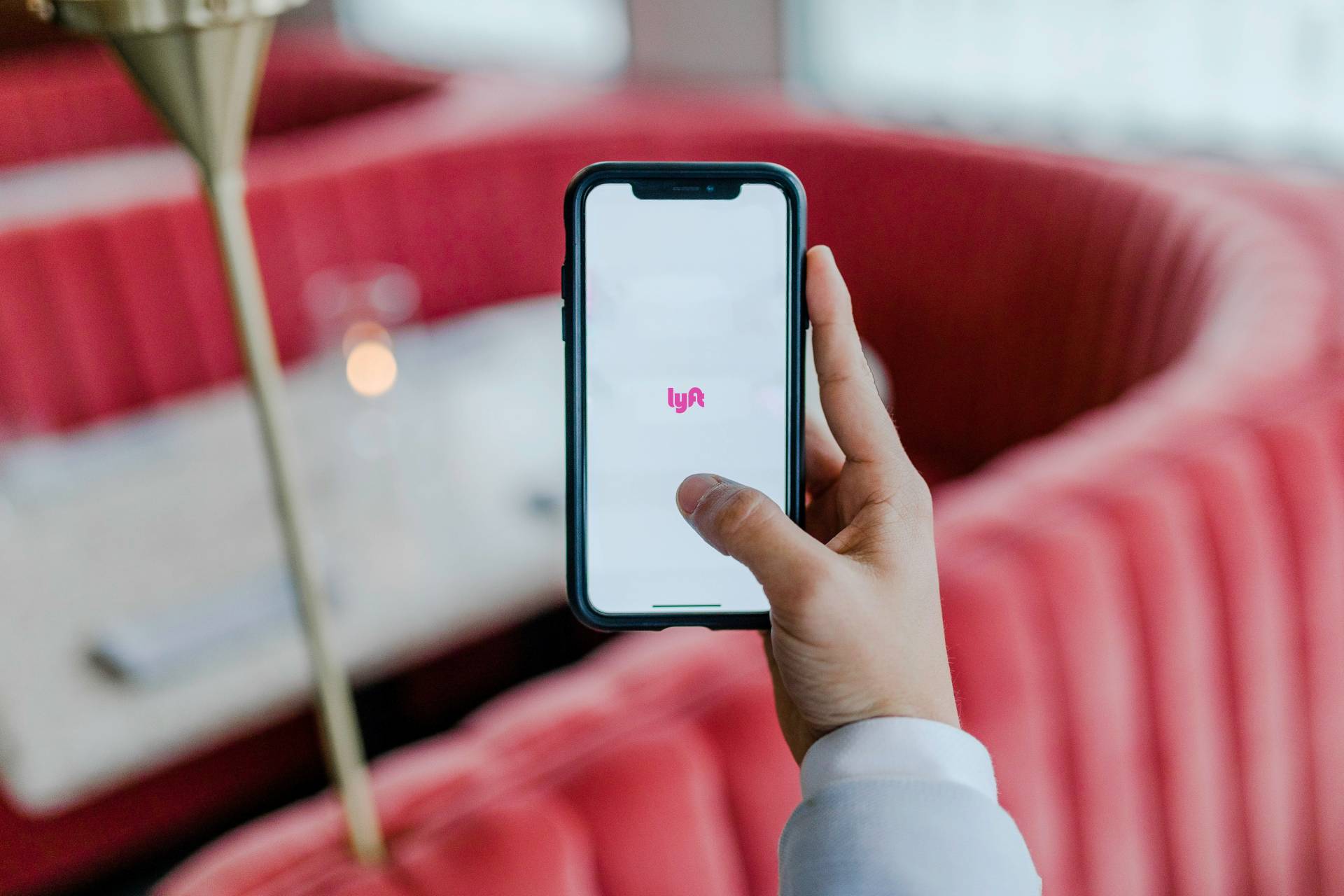In an age where our digital devices are as much a lifeline as they are tools for exploration, “help me” apps have emerged as essential companions in navigating the complexities of daily life. These applications, designed to offer assistance across a broad spectrum of needs, from mental health support and personal safety to education and task management, have become integral to enhancing our well-being, safety, and productivity. As we delve into the world of “help me” apps, we uncover a landscape rich with solutions tailored to meet the diverse challenges of modern living.
This article aims to explore the multifaceted roles these apps play, highlight some of the most impactful ones available, and offer insights into their evolving future. By understanding the full potential of “help me” apps, we can better harness their power to improve various aspects of our lives, making every day more manageable, more fulfilling, and safer.
Mental Health and Wellness

- Talkspace: This online therapy platform offers a private space to connect with licensed therapists via text, audio, or video messages from anywhere at any time. Tailored to individual needs, Talkspace addresses common mental health issues like anxiety, depression, and stress, providing a flexible and accessible alternative to traditional therapy sessions.
- BetterHelp: Facilitates professional counseling with a vast network of licensed therapists through an easy-to-use platform. BetterHelp matches users with counselors based on their specific needs, allowing for communication via messaging, live chat, phone calls, or video sessions. It’s suitable for those seeking support for various challenges, including anxiety, depression, relationships, and more.
- Calm: A leading app in meditation and sleep, Calm aims to lower stress, reduce anxiety, and improve sleep quality through guided meditations, sleep stories, breathing programs, and relaxing music. Its intuitive interface caters to beginners and seasoned meditators, making mindfulness practice a serene and accessible experience.
- Headspace: Designed to help users find balance and improve mental well-being through meditation and mindfulness. With sessions on stress management, focus, sleep, and anxiety, Headspace uses easy-to-follow guided meditations and mindfulness exercises, making it a great tool for those looking to enhance their daily life through meditation.
Safety and Emergency
- bSafe: This personal safety app includes features such as SOS signaling, voice activation, live streaming of location and video to chosen contacts, and more. Designed to act as a digital safety guardian, bSafe keeps users safe through its innovative use of technology in emergency situations.
- Noonlight: Integrates safety into everyday life with a simple button that silently calls for help whenever needed. Whether it’s during a potential medical emergency, a fire, or feeling unsafe when walking home, Noonlight dispatches the appropriate emergency services to the user’s location without requiring a verbal call.
- Life360: Offers peace of mind by connecting family members and close friends through real-time location sharing and communication. Its features include location alerts, crash detection, and driving safety insights, making it particularly useful for families wanting to stay informed about their members’ safety and whereabouts.
Educational Resources
- Khan Academy: A nonprofit educational platform that provides free, world-class education for anyone, anywhere. With thousands of courses ranging from mathematics to history and science, Khan Academy uses instructional videos and practice exercises to create a personalized learning experience for students of all ages.
- Duolingo: Turns language learning into a fun and addictive game with bite-sized lessons and achievements. Supporting over 30 languages, Duolingo is perfect for beginners and advanced learners alike, offering practice in reading, writing, listening, and speaking.
- Photomath: Simplifies learning math by allowing users to scan printed or handwritten math problems and receive step-by-step explanations. Photomath covers a wide range of topics from basic arithmetic to advanced calculus and geometry, making it an invaluable tool for students.
Productivity and Task Management
- Evernote: An all-encompassing note-taking app that helps organize personal and professional projects. With features for note-taking, journaling, web clipping, and document scanning, Evernote serves as a digital file cabinet, workspace, and planner all in one.
- Todoist: A powerful task manager and to-do list application that helps users organize their work and personal life. With features for setting reminders, due dates, and priorities, Todoist turns overwhelming task lists into manageable daily plans.
Health and Fitness
- MyFitnessPal: Tracks nutrition and exercise, offering a comprehensive database of foods to log daily meals and track calorie intake. It also syncs with various fitness devices and apps for a holistic view of health and fitness goals.
- Fitbit: Complements Fitbit’s range of activity trackers by monitoring daily steps, sleep patterns, heart rate, and exercise. The app provides detailed data visualizations and benchmarks progress against set goals, encouraging a healthier lifestyle.
Technical Support
- TeamViewer: Allows for remote control of computers and devices, making it easier to provide or receive technical support without being in the same location. TeamViewer is indispensable for IT professionals and casual users alike, offering secure and intuitive solutions for remote assistance.
Lifestyle and Daily Assistance
- IFTTT (If This Then That): Creates custom automations between internet-connected services and devices. From smart home automation to social media and productivity apps, IFTTT streamlines daily routines by connecting different apps and devices into a cohesive smart environment.
Travel and Navigation
- Google Maps: An essential navigation tool offering directions, traffic updates, and local business information. Google Maps is invaluable for everyday commutes, exploring new areas, and planning trips, providing detailed maps and route options for driving, walking, biking, and public transit.
Miscellaneous Assistance
- Airbnb: Connects travelers with local hosts who offer short-term lodging and unique experiences. Airbnb revolutionizes the way people travel, providing a platform to book accommodations and activities that offer a more personalized and authentic experience than traditional hotels.
- TaskRabbit: Matches users with local freelancers to help with tasks such as furniture assembly, moving help, cleaning, and minor repairs. TaskRabbit simplifies project completion and daily chores by connecting users with skilled taskers ready to lend a hand.
How to Choose the Right ‘Help Me’ App

In a sea of digital solutions, finding the right ‘help me’ app can be both empowering and overwhelming. Whether you’re seeking mental health support, aiming to improve your productivity, or looking for emergency assistance, the right app can make all the difference. Here’s how to navigate your options and select the app that best suits your needs:
Identify Your Needs: Start by clearly defining what you need help with. Are you looking to manage anxiety or depression, enhance your learning, or ensure personal safety? Understanding your specific requirements is the first step in narrowing down your choices.
Research and Reviews: Once you’ve identified your needs, look for apps that specialize in those areas. Read user reviews on app stores, technology blogs, and forums. Reviews can provide insights into the app’s effectiveness, usability, and any issues users may have encountered.
Privacy Policies: For apps that offer mental health support or personal safety features, privacy is paramount. Review the app’s privacy policy to understand how your data will be used and protected. Ensure that the app complies with relevant regulations like HIPAA (Health Insurance Portability and Accountability Act) for health-related information.
Ease of Use: The app’s design and user interface should be intuitive and user-friendly. A good ‘help me’ app should be easy to navigate, so you can find the help you need without additional stress. Look for apps with clean layouts, straightforward menus, and quick access to essential features.
Features and Functionality: Evaluate the features each app offers and how they align with your needs. For mental health apps, look for features like therapy sessions, mood tracking, or guided meditations. For learning apps, consider the range of subjects and teaching methods available. Safety apps should offer quick ways to alert emergency services or contacts.
Trial Periods and Subscriptions: Many ‘help me’ apps offer free trials or basic versions that allow you to test the app before committing to a subscription. Use these trial periods to assess whether the app meets your expectations and offers value for its cost.
Professional Endorsements: For health-related apps, endorsements or recommendations from healthcare professionals can be a good sign of the app’s credibility and effectiveness. Look for apps developed with input from experts in the relevant field.
Updates and Support: Regular updates indicate that the app is being actively maintained and improved. Check the app’s update history in the app store for information on how frequently it’s updated. Good customer support is also crucial, especially for apps that play a significant role in your daily well-being or safety.
By carefully considering these factors, you can choose a ‘help me’ app that not only addresses your specific needs but also respects your privacy, is easy to use, and provides real value in your quest for better health, productivity, or safety. Remember, the right app has the potential to significantly enhance your quality of life, so it’s worth taking the time to make an informed decision.
Comparing Free vs. Paid ‘Help Me’ Apps

When it comes to selecting ‘help me’ apps, one of the critical decisions you’ll face is choosing between free and paid options. Both have their merits and limitations, and understanding these can help you make an informed choice that best suits your needs and budget. Here’s a detailed comparison to guide you through this decision:
Free Apps: Pros and Cons
Pros:
- No Financial Commitment: The most obvious advantage of free apps is that they don’t cost anything to download and use. This makes them accessible to a wider audience, including those who might not be able to afford a paid subscription.
- Trial Opportunities: Many free apps offer a base level of functionality that allows users to test the app’s features without a financial commitment. This can be especially useful for gauging whether an app meets your needs before upgrading to a paid version, if available.
- Sufficient for Basic Needs: For users with basic or occasional needs, free apps often provide enough functionality to be helpful. Whether it’s basic mood tracking, simple to-do lists, or emergency contact features, a free app might be all you need.
Cons:
- Limited Features: Free apps typically offer limited features compared to their paid counterparts. Essential functions might be restricted, affecting the app’s effectiveness.
- Advertisements: To support their development, free apps often include advertisements. These can be intrusive and detract from the user experience, especially in moments when you’re seeking calm or focus.
- Privacy Concerns: Some free apps may collect data on users and share it with third parties for advertising purposes. Always review the privacy policy to understand how your data will be used.
Paid Apps: Pros and Cons
Pros:
- Advanced Features: Paid apps usually offer a more comprehensive set of features, providing users with a richer, more effective experience. Whether it’s in-depth analytics, a wider array of tools, or access to professional advice, paying for an app can unlock its full potential.
- No Advertisements: One of the significant benefits of paid apps is the absence of ads, offering a cleaner, more focused user experience. This is particularly important in apps used for learning, productivity, or mental health.
- Better Support and Updates: Paying for an app often means receiving better customer support and more frequent updates, ensuring the app stays relevant and continues to meet users’ needs effectively.
Cons:
- Cost: The most apparent downside of paid apps is the cost. Subscriptions or one-time purchases can add up, especially if you’re using multiple paid apps.
- Commitment: Paying for an app might make you feel obliged to use it, even if it’s not fully meeting your needs. It’s important to regularly assess whether the app continues to provide value for its cost.
Making the Choice
The decision between free and paid apps ultimately comes down to your specific needs, how much you’re willing to spend, and what you expect to get out of the app. Free apps can be a great starting point, but if you find an app that significantly helps you and offers a paid version with enhanced features, consider whether the investment might be worth the added benefits. Always look for apps with transparent pricing and a clear explanation of the features you’ll gain access to upon payment.
The Future of ‘Help Me’ Apps
As technology continues to advance at an unprecedented rate, the landscape of ‘help me’ apps is poised for significant transformation. These applications, designed to assist users in various aspects of their lives, from mental health support to productivity enhancement, are expected to become even more personalized, intuitive, and integrated into our daily routines. Here’s a glimpse into what the future may hold for ‘help me’ apps:
Artificial Intelligence and Machine Learning: The integration of AI and machine learning technologies is set to revolutionize ‘help me’ apps, enabling them to offer personalized advice and support based on individual user behavior, preferences, and needs. This could mean more accurate mental health assessments, customized learning plans, and highly tailored productivity strategies.
Augmented Reality (AR) and Virtual Reality (VR): AR and VR technologies have the potential to create immersive experiences for users of ‘help me’ apps. For instance, VR could be used for exposure therapy in mental health apps, allowing users to confront fears in a controlled, safe environment. AR could overlay helpful information onto the real world, enhancing learning and navigation apps.
Greater Integration with Wearable Technology: As wearable technology becomes more sophisticated, ‘help me’ apps will likely offer deeper integration with devices like smartwatches and fitness trackers. This could lead to real-time health monitoring, instant emergency assistance, and seamless productivity tracking, all accessible from your wrist.
Enhanced Privacy and Security: With increasing awareness of digital privacy and security, future ‘help me’ apps will likely place a stronger emphasis on protecting user data. This could involve advanced encryption methods, transparent data usage policies, and more user control over personal information.
Voice-Activated Assistance: Voice recognition technology will make ‘help me’ apps more accessible and hands-free. Users could interact with apps through natural language, making it easier to seek help, whether it’s dictating a note, starting a meditation session, or calling for emergency services without needing to navigate through menus.
Cross-Platform Integration: ‘Help me’ apps of the future will offer seamless experiences across various devices and platforms, ensuring users can access support whenever they need it, whether they’re on their tablet, smartphone, laptop, or smart home device.
Blockchain for Data Security and Privacy: Blockchain technology could be used to enhance the privacy and security of ‘help me’ apps by creating decentralized, tamper-proof records of user data. This would allow users to maintain control over their information, sharing it selectively and securely with the app or health providers.
Community and Social Features: The power of community will be harnessed more effectively in ‘help me’ apps, offering users platforms for sharing experiences, offering support, and building networks of help. This could be particularly impactful in mental health and learning apps, where peer support and collaboration are invaluable.
Predictive Analytics for Preventive Care: By analyzing user data over time, ‘help me’ apps could predict potential health issues, productivity roadblocks, or learning gaps before they become significant problems. This preemptive approach could transform how we manage health, work, and education.
The future of ‘help me’ apps is bright, with advancements in technology paving the way for more personalized, effective, and secure assistance. As these apps continue to evolve, they promise to offer unparalleled support in our pursuit of health, happiness, and productivity, making them an integral part of our digital lives.
Wrapping Up
In conclusion, “help me” apps stand at the forefront of digital innovation, offering a beacon of support in the vast sea of our daily challenges. These apps have evolved from simple tools to indispensable allies, enhancing our mental health, ensuring our safety, guiding our learning, and streamlining our productivity. As we look to the future, the potential for these applications to become even more integrated, intuitive, and impactful in our lives is immense. With advancements in technology, such as AI, AR, and VR, we can anticipate a new era of personalized support. Privacy and security will become stronger, ensuring our data remains safe. The fusion of these apps with wearable technology will bring assistance right to our fingertips, making help more accessible than ever.
Choosing the right “help me” app requires a balance between understanding our needs, the features offered, and the level of privacy and support we’re comfortable with. Whether opting for a free or paid app, the goal remains the same: to find a tool that genuinely enhances our daily lives. As we navigate this digital landscape, it’s clear that “help me” apps are more than just applications on our devices; they are partners in our journey towards a more fulfilled, safe, and productive life.
The future of these apps is not just about technological advancements; it’s about creating a world where everyone has access to the support they need, when they need it. As we continue to embrace and contribute to the evolution of “help me” apps, we open up endless possibilities for personal growth, well-being, and connectivity. Let us harness the power of these digital companions to create a brighter, more supported future for all.
Help Me App FAQs
What is a “help me” app?
A “help me” app is a digital tool designed to offer assistance and support across various aspects of life. These apps can help with mental health, personal safety, education, task management, and more, providing users with resources and services to improve their well-being, safety, and productivity.
How do I see all my apps?
On most smartphones, you can see all your apps by swiping up from the bottom of the screen to access the app drawer. This will display all installed apps on your device.
Where to download apps?
Apps can be downloaded from official app stores. For Android devices, use the Google Play Store. For Apple devices, use the App Store. Always download apps from these official sources to ensure they are safe and secure.
Where is my Play Store app?
The Play Store app is typically found on the home screen or app drawer of your Android device. If you can’t find it, you might have accidentally removed it from the home screen. You can still access it through the app drawer.
How do I see all the apps on my Android phone?
To see all apps on your Android phone, open the app drawer by swiping up from the bottom of the home screen. This will display all the apps installed on your device.
How do I recover all my apps?
To recover all your apps, sign in to the same Google account used on your previous device or before a factory reset. Go to the Google Play Store, tap on your profile icon, select “Manage apps & device,” and go to “Manage,” where you can see and reinstall your previously installed apps.
Why can’t I see all my apps on Android?
If you can’t see all your apps, they might be hidden or disabled. Check your device’s settings to ensure no apps are hidden or disabled. Also, ensure you’re viewing all apps in the app drawer and not just those on the home screen.
Where did my app icon go on Android?
If your app’s icon is missing, it might have been removed from the home screen. You can still access your apps from the app drawer by swiping up from the bottom of the screen. To add the icon back to your home screen, open the app drawer, press and hold the app icon, and drag it to your desired location on the home screen.
How do I find hidden apps on my Samsung phone?
To find hidden apps on your Samsung phone, go to the app drawer, tap on the three dots at the top right corner, select “Settings,” and then choose “Hide apps.” This will show any apps you’ve hidden. To unhide them, deselect the apps from this list, and they will reappear in your app drawer.
Featured Image Credit: Photo by Austin Distel; Unsplash – Thank you!













